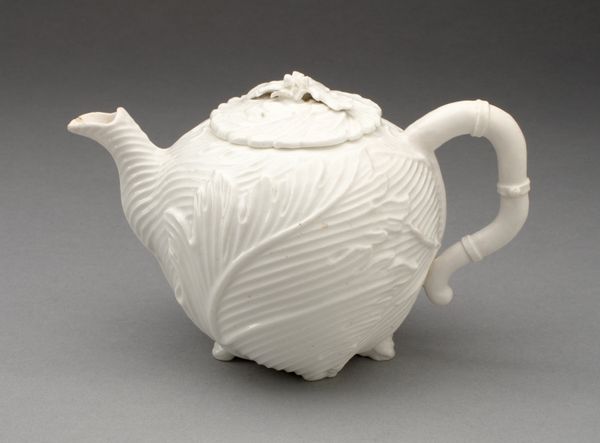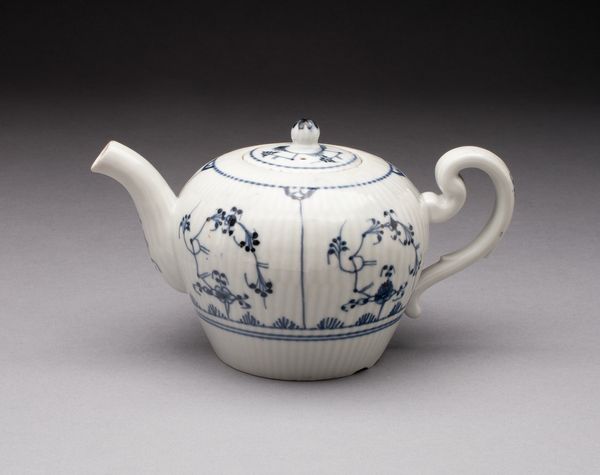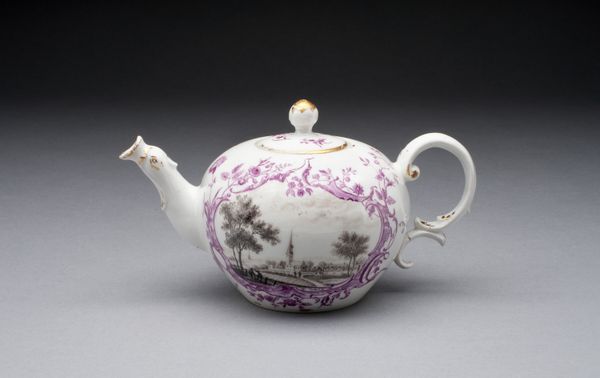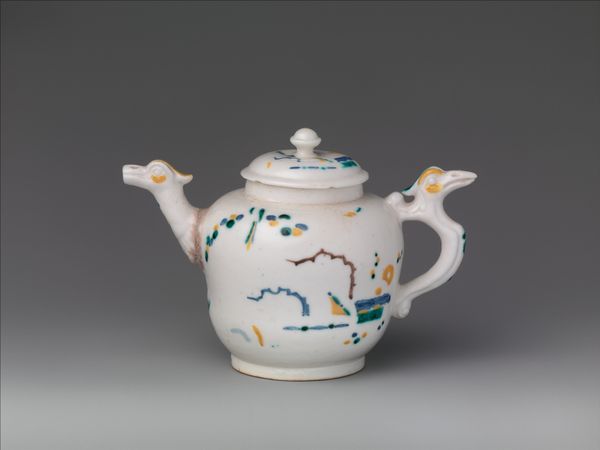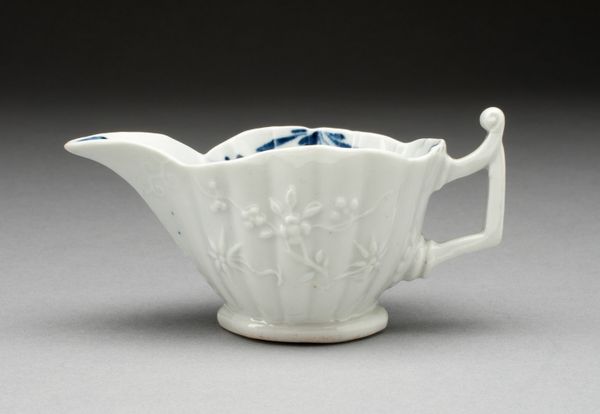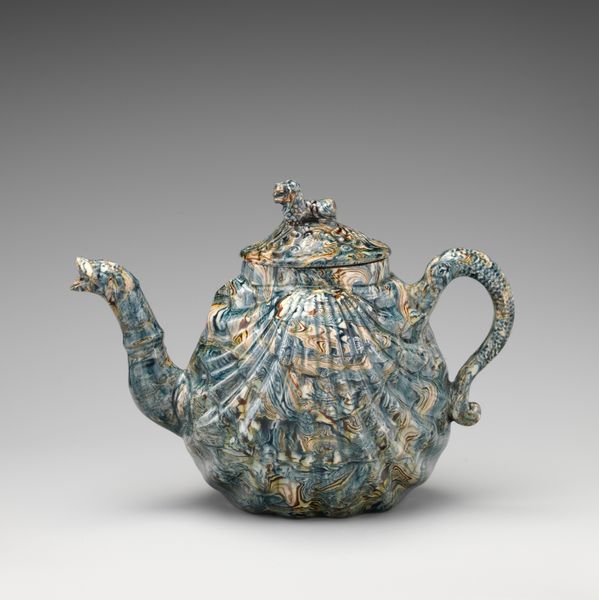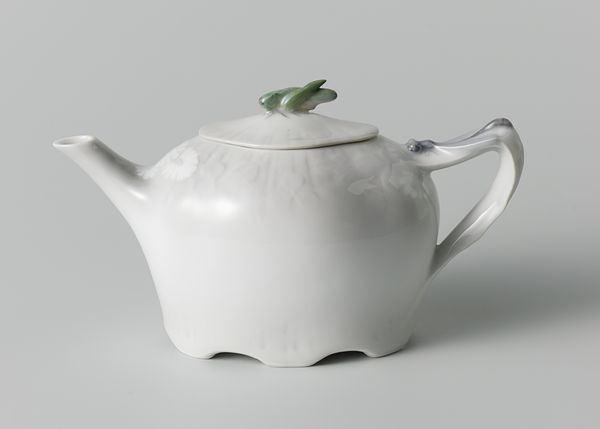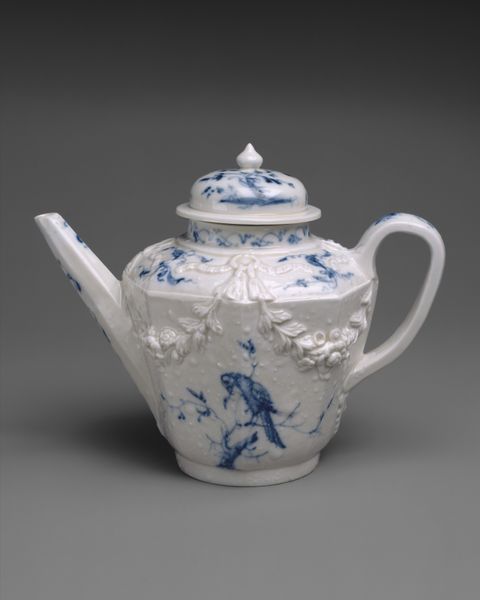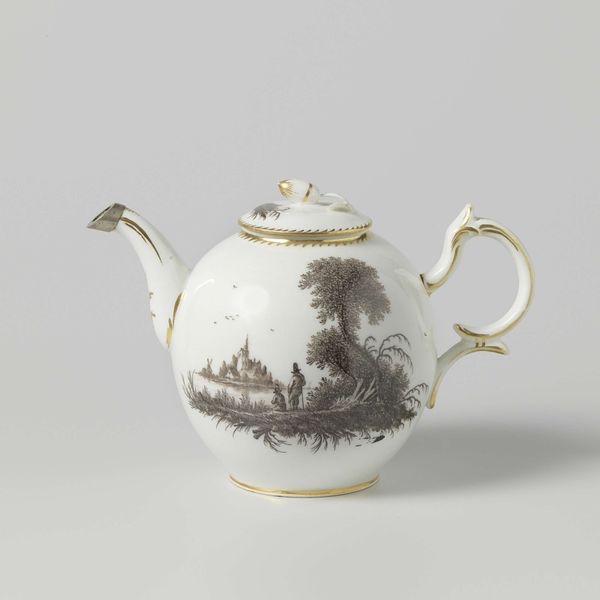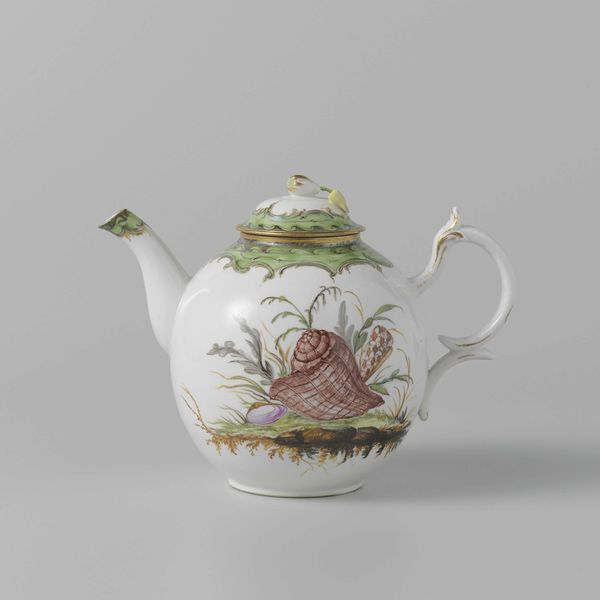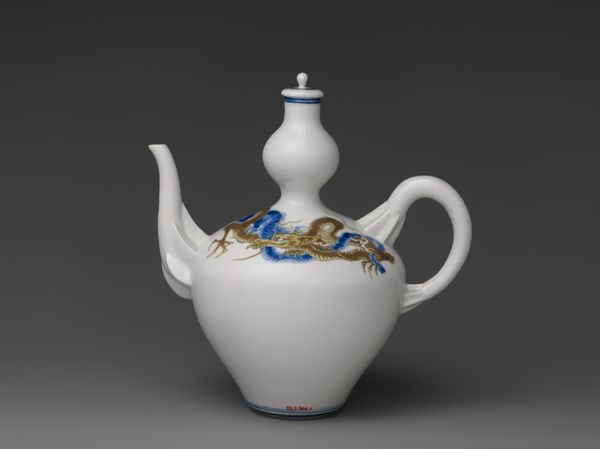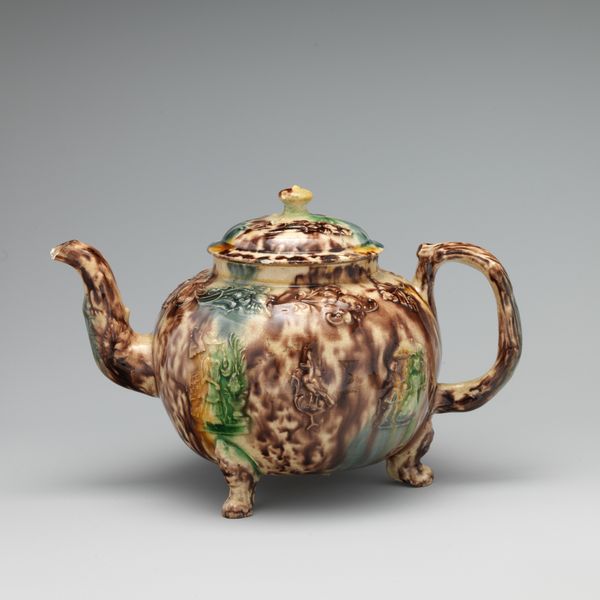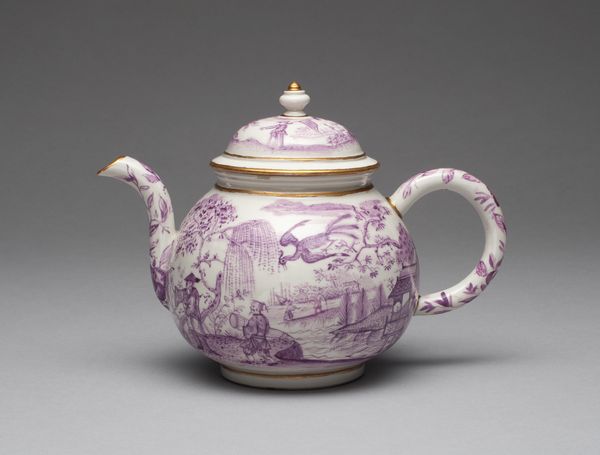
ceramic, porcelain, sculpture
#
ceramic
#
porcelain
#
sculpture
#
ceramic
#
decorative-art
#
rococo
Dimensions: Overall (confirmed): 4 13/16 × 6 7/8 × 4 1/4 in. (12.3 × 17.5 × 10.8 cm)
Copyright: Public Domain
Editor: So, here we have a porcelain teapot, made sometime between 1740 and 1750 by the Chelsea Porcelain Manufactory. It's currently housed at the Met. What strikes me immediately is how it merges the functional with the decorative – almost like a sculpted cabbage! How do you interpret this work, especially considering its materials? Curator: Well, focusing on its materiality and the context of its production, we see this teapot isn’t just a charming decorative object. The fact that it's made of porcelain, specifically Chelsea porcelain, speaks volumes about 18th-century manufacturing, trade, and social aspiration. Porcelain was a luxury good. Editor: So, it was more than just a fancy tea vessel? Curator: Exactly! It’s about the intense labour, the skilled artisans, the global networks needed to import the raw materials, and the consumer culture that craved these status symbols. Notice how the naturalistic cabbage design both elevates and obscures the industrial processes. Is it ‘high art’ or craft? This piece challenges that boundary. The leaves meticulously formed in porcelain hint at the material transformations involved, moving from raw clay to refined, marketable object. It begs the question: who profited from this production, and at what cost? Editor: I never thought of it that way. It’s easy to just see a pretty teapot, but it embodies so much more when you consider its production and consumption. Curator: Precisely. Looking at art this way reveals a lot about the societies that created it, exposing the complexities beneath a seemingly simple surface. I will remember this cabbage.
Comments
No comments
Be the first to comment and join the conversation on the ultimate creative platform.
